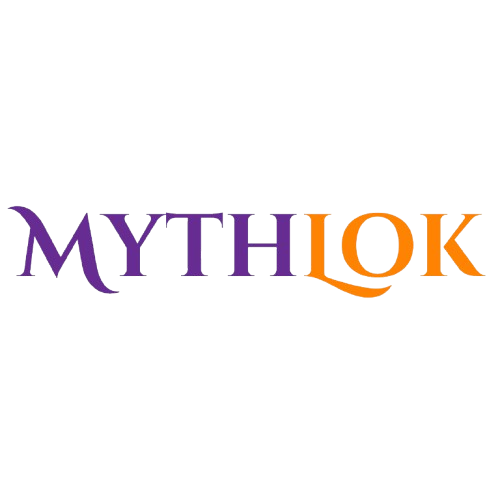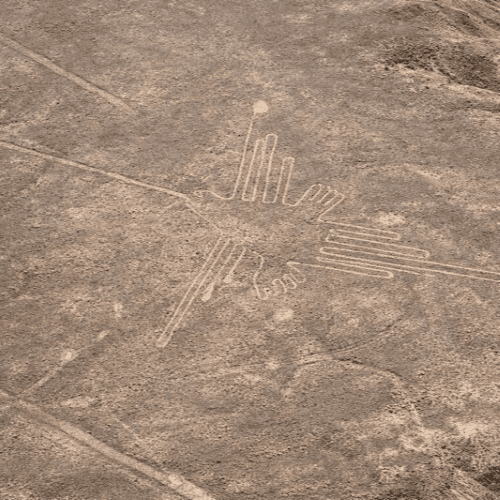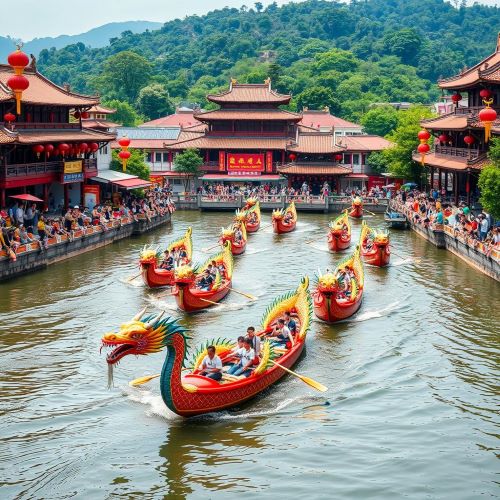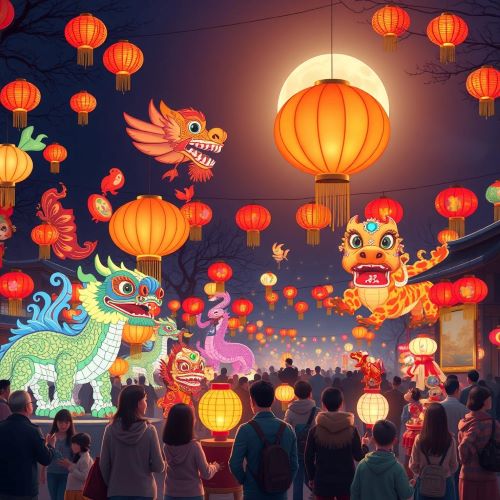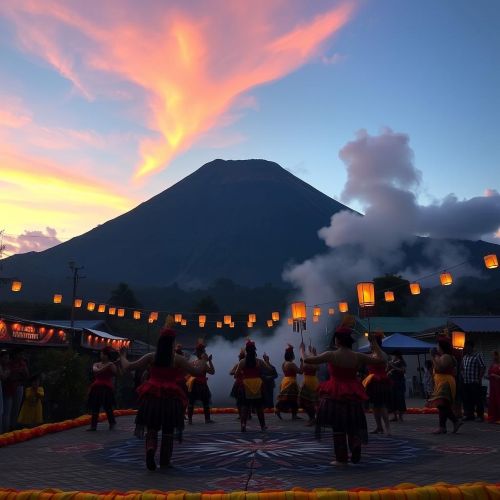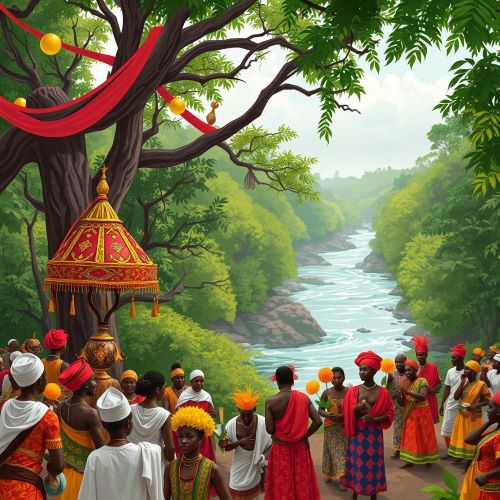Inti Raymi : Festival of the Sun
At a glance
| Description | |
|---|---|
| Location | Cusco |
| Country | Peru |
| Dedicated To | Inti |
| Duration | 1 day |
| Time of Year | June 24th |
Introduction
The Inti Raymi festival, or “Festival of the Sun,” is a cornerstone of Andean culture, honoring the sun god Inti and marking the winter solstice in the Southern Hemisphere. Rooted in Incan tradition, it symbolizes renewal and the deep relationship between humanity and nature. Once banned by Spanish colonizers in the 16th century, the festival has been revived and continues to thrive, blending ancient rituals with modern celebrations. Held annually on June 24th in Cusco, Peru, the former Incan capital, it attracts visitors from around the world, eager to witness its vibrant processions, music, and ceremonial reenactments.
Connection with Mythology
In Incan mythology, Inti, the sun god, was revered as the giver of life and sustenance. According to legend, the sun first rose from Lake Titicaca’s Island of the Sun, designating the Inca as his chosen descendants. Inti Raymi, celebrated during the winter solstice, was a crucial ritual to honor Inti and restore his strength, ensuring agricultural prosperity. The festival was not just a religious observance but a reaffirmation of the Incas’ cosmic balance, linking the sun, the Earth (Pachamama), and their civilization. Even today, it reflects the Andean belief in nature’s interconnectedness, blending ancestral traditions with modern cultural pride.
Main Activities
The modern Inti Raymi festival in Cusco is a grand reenactment of ancient traditions, bringing Incan rituals to life across three key locations: Qorikancha, the Plaza de Armas, and Sacsayhuamán. The event begins with a vibrant procession led by the Sapa Inca and Coya, followed by ceremonies featuring traditional music, dance, and symbolic offerings of corn, coca leaves, and animal figurines to honor Inti. At Sacsayhuamán, the festival reaches its climax with sacred rituals, including a symbolic sacrifice that pays homage to ancient customs while respecting contemporary values.
Beyond the formal ceremonies, Inti Raymi is a multi-day celebration filled with cultural performances, community feasts, and ritual cleansings. Music and dance play a crucial role, with performers using traditional instruments to depict Incan myths and agricultural cycles. The festival also includes historical reenactments, such as the arrival of the Inca ruler, immersing spectators in the grandeur of the past. Shared meals and festivities foster a sense of unity, making Inti Raymi not just a tribute to the sun god but a living expression of Andean heritage.
Importance in Cultural History
Inti Raymi is more than just a festival; it is a living bridge to the Incan past, ensuring that traditions, beliefs, and customs remain relevant in the modern world. By reenacting ancient ceremonies, communities strengthen their connection to their ancestors and reinforce their unique cultural identity. This celebration is a crucial expression of indigenous pride, serving as a reminder of the Incan Empire’s advanced knowledge of astronomy, agriculture, and social organization.
Once suppressed by colonial rule, the revival of Inti Raymi in the 20th century marked a resurgence of indigenous heritage. Today, it provides a space for cultural expression through art, music, dance, and storytelling, empowering indigenous communities to preserve their languages and traditions. The festival also fosters intergenerational learning, passing down ancestral knowledge while educating a global audience about Andean history. More than just a historical tribute, Inti Raymi is a symbol of resilience, ensuring that Incan traditions continue to thrive in a rapidly changing world.
International Appeal
Inti Raymi has grown from a regional tradition into a globally recognized cultural event, drawing thousands of visitors to Cusco each year. This influx of international attention has helped position Peru as a premier destination for heritage tourism, allowing travelers to immerse themselves in the rich traditions of the Andean world. The festival serves as both a historical reenactment and a vibrant display of indigenous pride, bringing together locals and tourists in a shared appreciation of Incan heritage.
Beyond Peru, Inti Raymi has influenced similar celebrations in Bolivia, Ecuador, and among Andean diaspora communities in cities like Madrid and Buenos Aires. These global adaptations highlight the festival’s role in strengthening cultural identity and fostering connections across borders. However, this growing appeal also raises concerns. Increased tourism, while beneficial for the economy, can lead to commercialization, environmental strain, and a shift from authentic cultural practice to spectacle.
Despite these challenges, Inti Raymi remains a powerful testament to the resilience of Andean traditions. It continues to evolve as both a spiritual homage and a cultural bridge, ensuring that the legacy of the Incan Empire endures for future generations.
Source
Espinoza Navarro, Faustino. El Inti Raymi. Instituto Nacional de Cultura, Peru, 1944.
Inti Raymi Festival in Cusco.” Peru Travel Guide. https://peru.travel/.
Reinhard, Johan. Sacred Mountains of the Andes. National Geographic Society, 2002.
Garcilaso de la Vega. The Royal Commentaries of the Incas. University of Texas Press, 2006.
“Sacsayhuamán: The Heart of Inti Raymi.” Lonely Planet. https://lonelyplanet.com/.
Frequently Asked Questions
Lorem ipsum dolor sit amet, consectetur adipiscing?
Lorem ipsum dolor sit amet, consectetur adipiscing elit. Praesent convallis vestibulum justo, ac tincidunt nunc vehicula quis. Nullam id dolor quis orci malesuada feugiat. Curabitur aliquet libero at urna ullamcorper, ac ultricies nulla dapibus.
Lorem ipsum dolor sit amet, consectetur adipiscing?
Lorem ipsum dolor sit amet, consectetur adipiscing elit. Praesent convallis vestibulum justo, ac tincidunt nunc vehicula quis. Nullam id dolor quis orci malesuada feugiat. Curabitur aliquet libero at urna ullamcorper, ac ultricies nulla dapibus.
Lorem ipsum dolor sit amet, consectetur adipiscing?
Lorem ipsum dolor sit amet, consectetur adipiscing elit. Praesent convallis vestibulum justo, ac tincidunt nunc vehicula quis. Nullam id dolor quis orci malesuada feugiat. Curabitur aliquet libero at urna ullamcorper, ac ultricies nulla dapibus.
Lorem ipsum dolor sit amet, consectetur adipiscing?
Lorem ipsum dolor sit amet, consectetur adipiscing elit. Praesent convallis vestibulum justo, ac tincidunt nunc vehicula quis. Nullam id dolor quis orci malesuada feugiat. Curabitur aliquet libero at urna ullamcorper, ac ultricies nulla dapibus.
Lorem ipsum dolor sit amet, consectetur adipiscing?
Lorem ipsum dolor sit amet, consectetur adipiscing elit. Praesent convallis vestibulum justo, ac tincidunt nunc vehicula quis. Nullam id dolor quis orci malesuada feugiat. Curabitur aliquet libero at urna ullamcorper, ac ultricies nulla dapibus.

